Northern Virginia’s tidal, freshwater wetlands, like Dyke Marsh, have several types of native plant communities, 50 FODMers and friends learned on March 3, 2024, in a presentation by Nelson DeBarros.
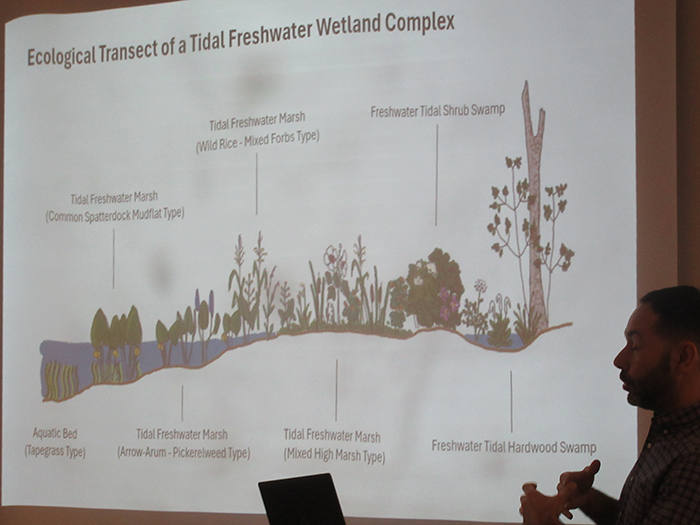 |
| Mr. Debarros described how land transitions from open water to upland. |
 |
| Around 50 people learned about wetland plants. |
Mr. DeBarros started with submerged aquatic vegetation, like wild celery (Vallisneria americana) and coontail (Ceratophyllum demersum) and moved upland through a typical wetland complex to hardwood swamp habitat.
Here are a few highlights:
- Two common examples of tidal freshwater, herbaceous marsh plants are common spatterdock (Nuphar advena) and pickerelweed (Pontederia cordata), plants often mixed in together. Spatterdock has a yellow, golf-ball-like flower that never opens. Pickerelweed has purple spike flowers with small yellow dots that attract pollinators. Ducks and waterfowl eat pickerelweed berries and it is a host plant for several moth species.
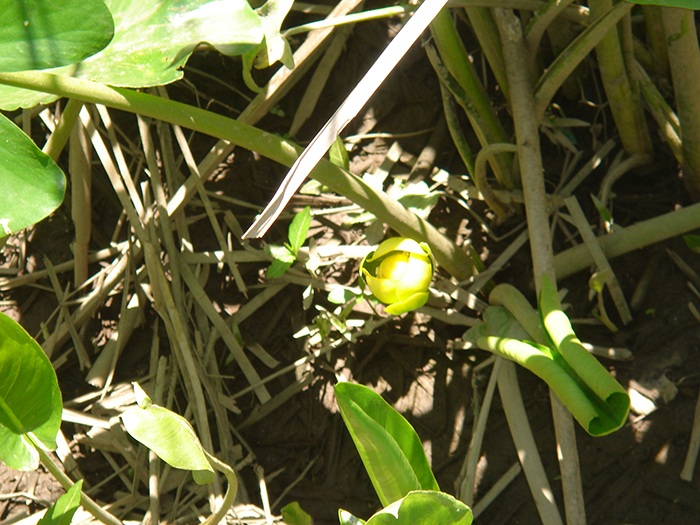 |
| Common spatterdock (Nuphar advena) |
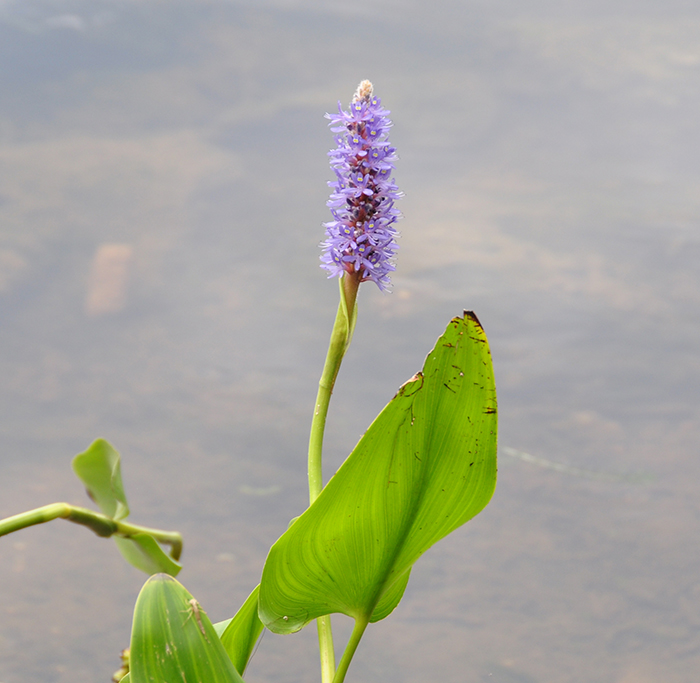 |
| Pickerelweed (Pontederia cordata) |
- The mixed high marsh is home to orange jewelweed (Impatiens capensis), which has a cornucopia-like flower that bumblebees and hummingbirds go into to pollinate. Dyke Marsh’s signature plant, narrowleaf cattail (Typha angustifolia), thrives here and can reach seven feet in height. The cattail’s flower can form 200,000 seeds.
- More woody plants are found in the tidal shrub swamp habitat, plants like buttonbush (Cephalanthus occidentalis), a plant with a spherical flowers popular with pollinators.
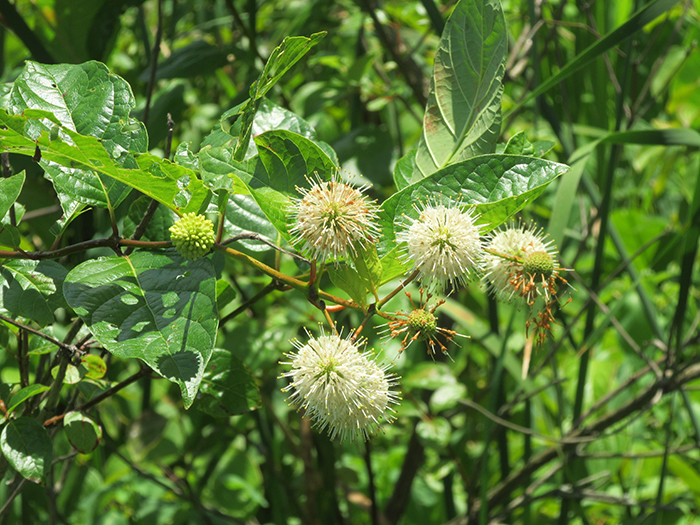 |
| Buttonbush (Cephalanthuys accidentalis) |
- In the hardwood swamp habitats, pumpkin (Fraxinus profunda) and green ash (Fraxinus pennsylvanica) trees were once dominant, but have been attacked by an invasive insect, the emerald ash borer (Agrilus planipennis) (See articles on this website). He’s “hopeful” that some trees will survive. Large mats of lizard’s tail (Saururus cernuus) can also be found here. It’s a food source for beavers and its rhizomes have been used to treat inflammations.
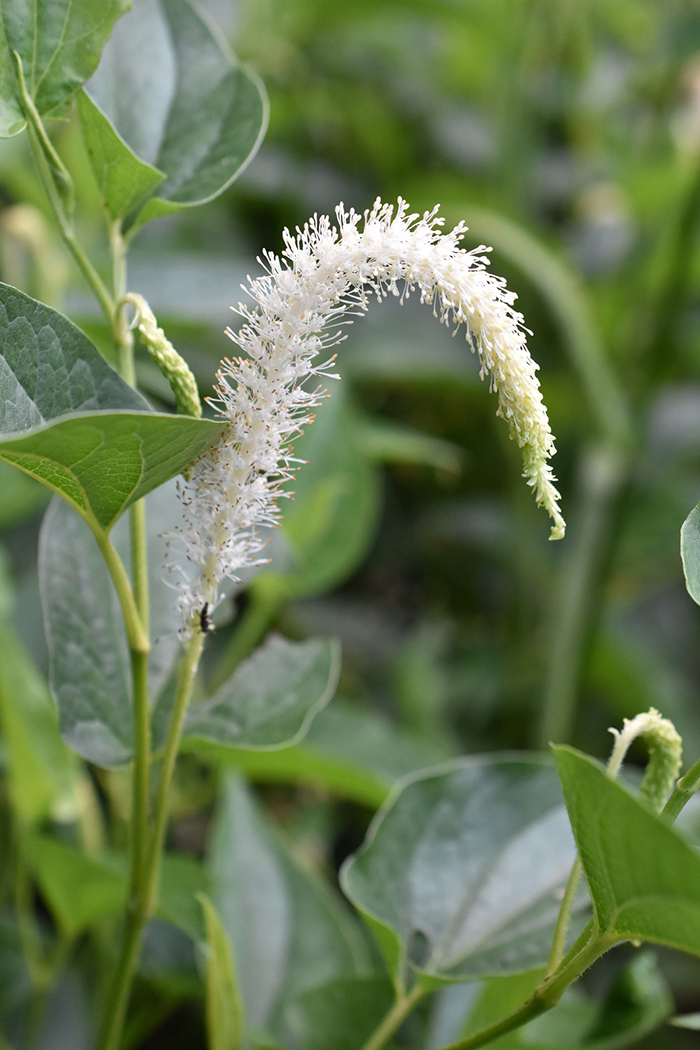 |
| Lizard tail (Saururus cernuus) |
Other examples of local tidal, freshwater wetlands are Little Hunting Creek and the Great Marsh in the Mason Neck Wildlife Refuge. Mr. DeBarros is a vegetation ecologist with the Fairfax County Park Authority.

